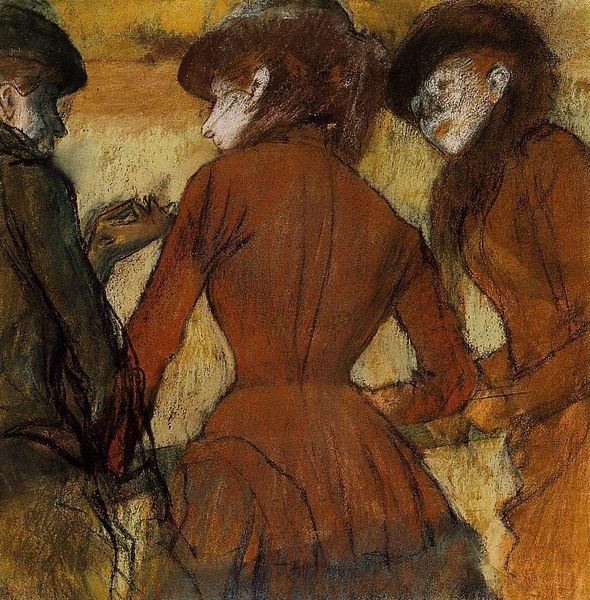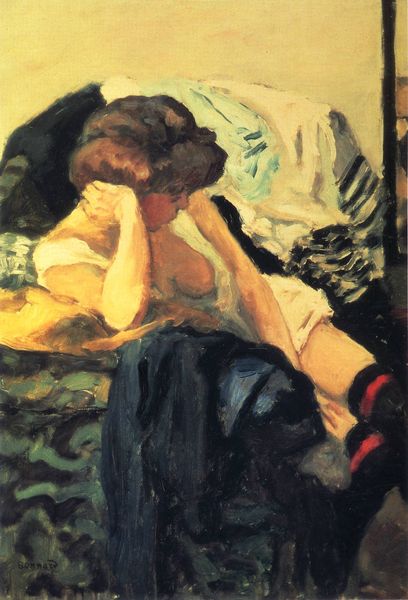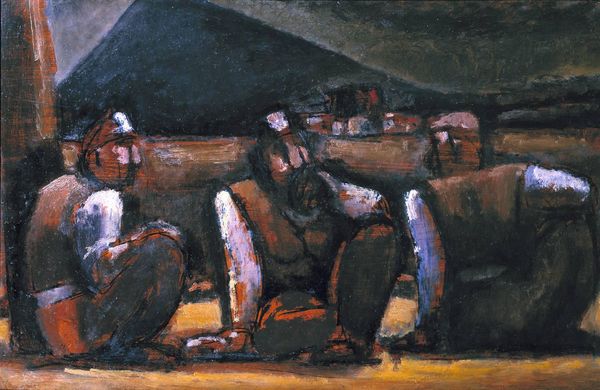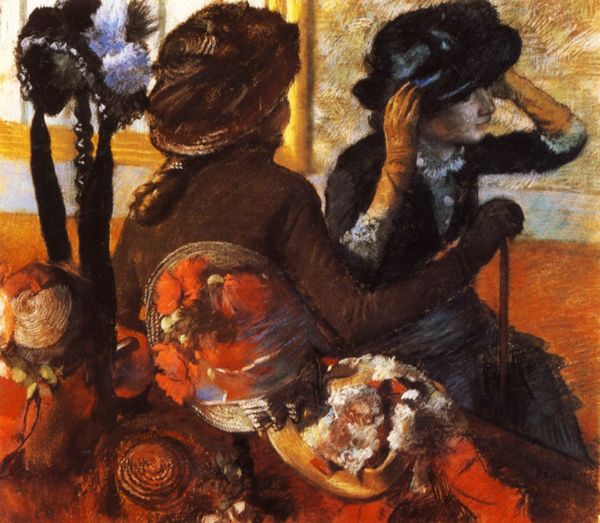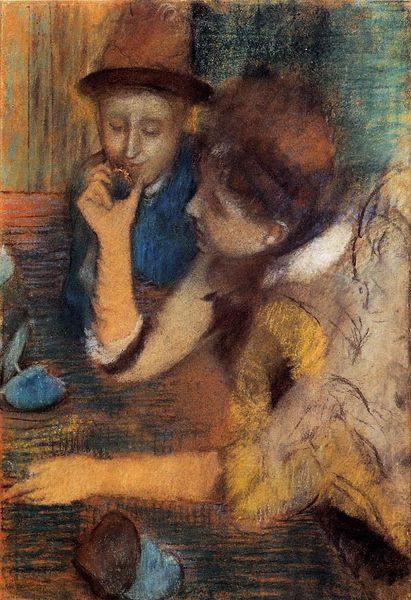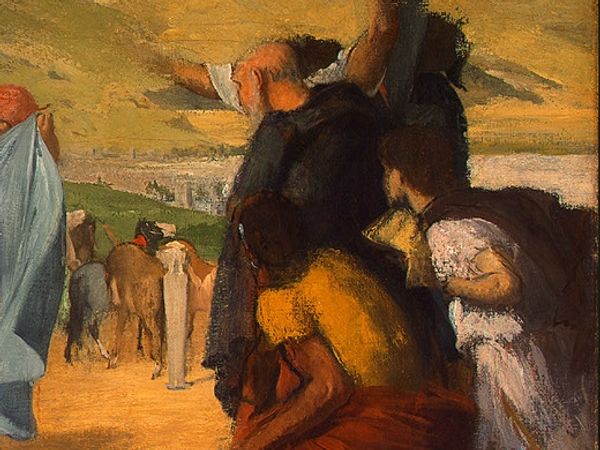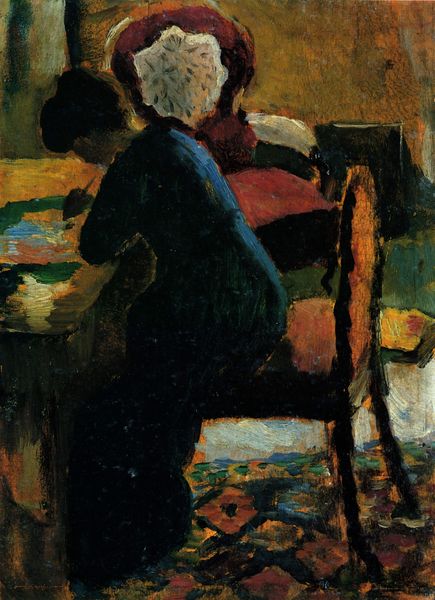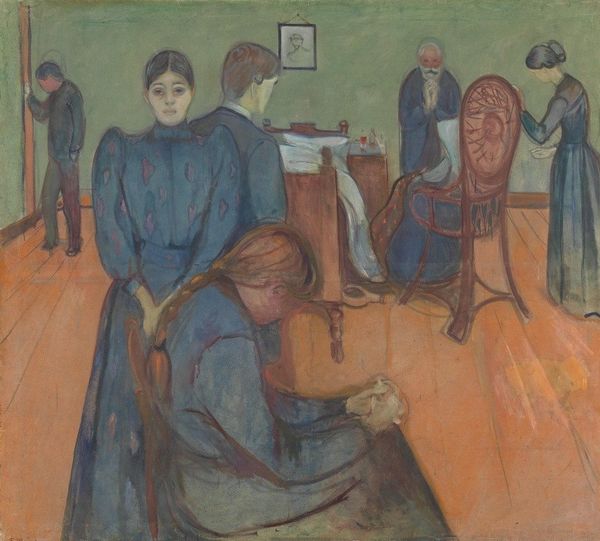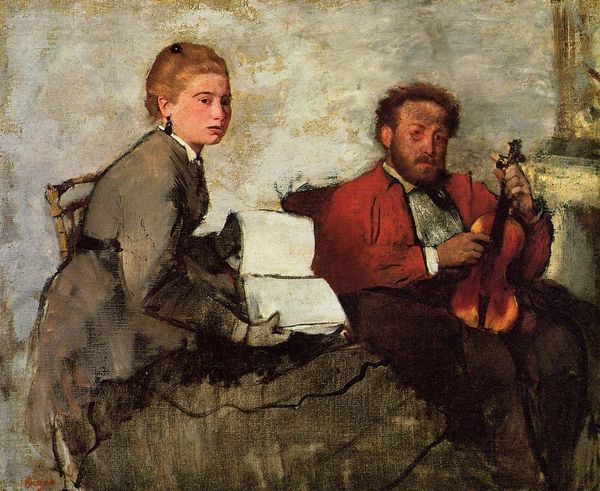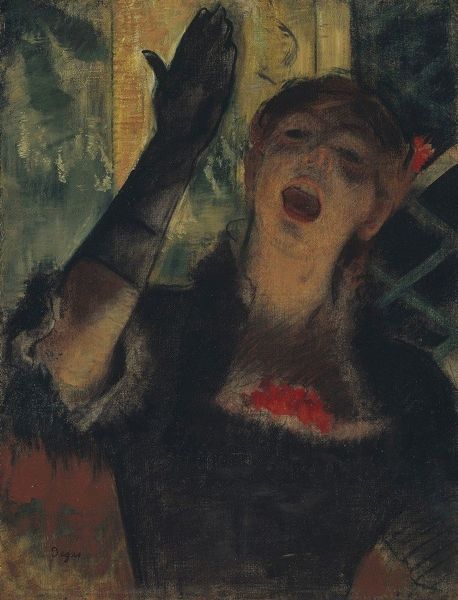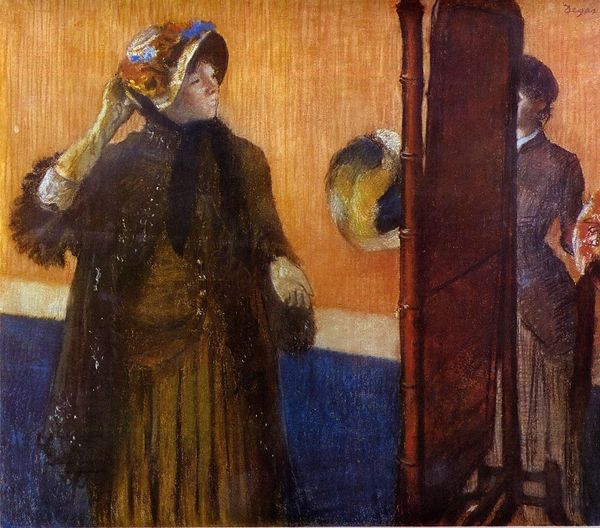
drawing, pastel
#
portrait
#
drawing
#
impressionism
#
charcoal drawing
#
figuration
#
oil painting
#
group-portraits
#
pastel
#
portrait art
Copyright: Public domain
Editor: This is Degas' "At the Milliner's" from 1882, currently at MoMA. It’s a pastel and charcoal drawing that shows two women in a shop, seemingly absorbed in examining hats. I’m struck by how intimate it feels, almost like a stolen glance. What do you see in this piece, beyond the surface? Curator: Beyond the intimate setting, it's important to remember that Degas was deeply interested in depicting modern life, particularly the lives of working women in Paris. Think about what a milliner's shop represented in the late 19th century: a space of commerce, creativity, and female sociability. The careful composition directs our gaze, doesn’t it? We're not given a full view, almost as though we’re participating in a private moment. How might this relate to broader societal views of women at the time? Editor: That's interesting. So the cropped composition isn't just an aesthetic choice, it reflects how women were perceived— partially visible, observed rather than fully understood? Curator: Precisely. Moreover, consider the politics of display here. Degas chose to depict this private, commercial exchange at a time when the role of women in the public sphere was intensely debated. The image, by representing them working and engaging with commerce, enters into this socio-political argument, subtly validating female economic activity. Where were paintings such as this usually exhibited at this time? And who was the intended audience? Editor: Hmm, galleries, probably? Wealthy patrons interested in modern life? Curator: Exactly. So, what does it tell us that this slice of Parisian life found its place within those elite spaces, inviting discussion and observation? Editor: I hadn’t really considered how the setting and the intended audience played such a big role in understanding the work's deeper meaning. Thanks! Curator: It's crucial to see these paintings not just as pretty pictures, but as reflections of power dynamics and social attitudes. Hopefully, this gives you a better grasp of the politics of imagery and display in the art world of the time!
Comments
No comments
Be the first to comment and join the conversation on the ultimate creative platform.

